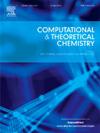克林霉素新剂型抗菌辅料的DFT研究
IF 3
3区 化学
Q3 CHEMISTRY, PHYSICAL
引用次数: 0
摘要
药用赋形剂作为防腐剂、着色剂、润滑剂、粘合剂、崩解剂和稀释剂,在药物配方中起着至关重要的作用。克林霉素是一种lincosamide抗生素,广泛用于治疗各种细菌感染,包括骨髓炎、关节感染、盆腔炎、链球菌性咽喉炎、肺炎、急性中耳炎、心内膜炎等。它有多种剂型,如口服、静脉注射、局部和阴道剂型。在常见的防腐剂中,苯甲醇常用于克林霉素制剂。采用密度泛函理论(DFT)研究了克林霉素在苯酚、苯甲醇和邻苯苯酚三种防腐剂辅料存在下的物理和化学稳定性。分子间的相互作用用计算的结合能、分子静电势(MESP)图和拓扑参数进行了分析。通过模拟红外光谱进一步评价了其化学稳定性。基于dft的计算方法能够对赋形剂-药物相互作用进行比较评估,以确定最适合克林霉素配方的防腐赋形剂。本文章由计算机程序翻译,如有差异,请以英文原文为准。

DFT studies for searching of anti-microbial excipients for the novel formulation of clindamycin
Pharmaceutical excipients serve vital roles in drug formulations as preservatives, coloring agents, lubricants, binders, disintegrates, and diluents. Clindamycin, lincosamide antibiotic, is widely used to treat various bacterial infections, including osteomyelitis joint infections, pelvic inflammatory disease, strep throat, pneumonia, acute otitis media, and endocarditis. It is available in multiple dosage forms such as oral, intravenous, topical, and vaginal formulations. Among common preservatives, benzyl alcohol is frequently used in clindamycin formulations. Density Functional Theory (DFT) has been employed to investigate the physical and chemical stability of clindamycin in the presence of three preservative excipients: phenol, benzyl alcohol, and o-phenyl phenol. Molecular interactions have been analysed using calculated binding energies, molecular electrostatic potential (MESP) maps, and topological parameters. Chemical stability has been further evaluated through simulated infrared (IR) spectra. The DFT-based computational approach enabled the comparative assessment of excipient-drug interactions to identify the most suitable preservative excipient for clindamycin formulation.
求助全文
通过发布文献求助,成功后即可免费获取论文全文。
去求助
来源期刊

Computational and Theoretical Chemistry
CHEMISTRY, PHYSICAL-
CiteScore
4.20
自引率
10.70%
发文量
331
审稿时长
31 days
期刊介绍:
Computational and Theoretical Chemistry publishes high quality, original reports of significance in computational and theoretical chemistry including those that deal with problems of structure, properties, energetics, weak interactions, reaction mechanisms, catalysis, and reaction rates involving atoms, molecules, clusters, surfaces, and bulk matter.
 求助内容:
求助内容: 应助结果提醒方式:
应助结果提醒方式:


